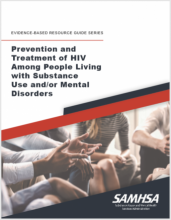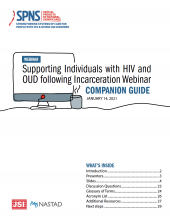
This guide offers considerations for how state agency staff can develop and maintain an accessible, HIV and opioid use disorder (OUD) service inventory. This guide can be used by state agency HIV and OUD staff to:



This guide offers considerations for how state agency staff can develop and maintain an accessible, HIV and opioid use disorder (OUD) service inventory. This guide can be used by state agency HIV and OUD staff to:
This package is a learning tool designed for health departments and community-based organizations newly offering syringe services programs (SSPs) with the purpose of indexing the materials needed for safer injection, what to offer at a syringe services program, and how to explain what materials a
In Los Angeles, New York, Houston, Philadelphia, and Washington, D.C., a National Institutes of Health funded clinical trial, known as INTEGRA, is evaluating the efficacy of delivering integrated HIV and substance use disorder care via mobile clinics.
Transgender people and communities, including nonbinary people, have specific needs within harm reduction programs.
In May, the New England AIDS Education Training Center (NEAETC) published a set of pages dedicated to providing information about and resources for HIV and HIV-related topics.
The HIV and OUD Service and Funding Matrices Template supports state health departments in identifying opportunities for enhanced coordination between HIV and OUD funding and service provision.
This policy brief identified states potentially at risk for an HIV or HCV outbreak and used data from multiple sources to examine rural-urban differences in 1) state-level infectious disease surveillance, prevention activities, and collaboration with stakeholders; 2) local health department-level
This webinar companion guide provides information for the January 2021 Strengthening Systems of Care: Supporting People with HIV and Opioid Use Disorder following Incarceration webinar.
This technical package, a collaborative effort between CDC and NASTAD, provides a broad framework as well as evidence-informed strategies and approaches to support the planning, design, implementation, and sustainability of new and existing syringe services programs (SSPs).